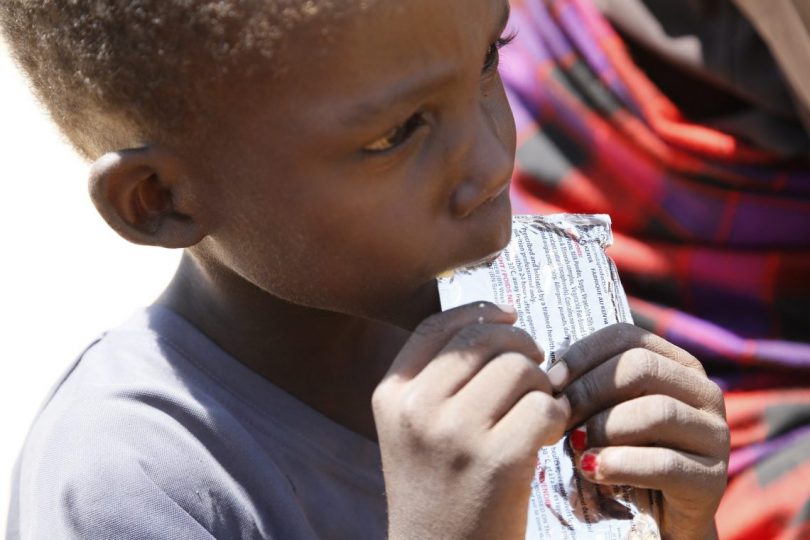Global catastrophes such as COVID-19 often hit the poor in developing countries hardest. What impact will COVID-19 have on global food and nutrition and what are the implications for foreign aid budgets?
Water
Food and water are inextricably linked. As the virus moves to low-income countries and water scarce regions, its worst impact could be among vulnerable populations with no access to basic water services. Many of the world’s poor do not have access to running water and soap, the first line of defence against COVID-19. UN-Water recently reported that 2.2 billion people do not have safely managed drinking water, 4.2 billion go without safe sanitation services and three billion lack basic handwashing facilities. Furthermore, an estimated 896 million people use health care facilities with no water and 1.5 billion use health facilities with no sanitation. These conditions present a source of stress and disease, particularly for vulnerable and marginalised communities where people sometimes need to skip bathing to save water for cooking.
Labour
Whilst many developed and emerging economies have resilient food production and distribution systems, developing countries often do not. In many cases, food supply depends on recent and forthcoming harvests and is dependent on there being adequate healthy labour to deliver the food from the field to the market. Shenggen Fan has commented that “COVID-19 is a health crisis. But it could also lead to a food security crisis if proper measures are not taken.” He based these observations on how devastating disease outbreaks such as the Ebola epidemic in Africa have been for fragile food systems. Fan points out that when the Ebola epidemic hit Guinea, Liberia and Sierra Leone in 2014, rice prices in those countries increased by more than 30 per cent and the price of cassava, a staple in Liberia, skyrocketed by 150 per cent.
Trade and supply chain issues
In general, poorer countries are particularly prone to food security shocks arising from drought, economic perturbations such as the global food price crisis of 2008, agricultural pest and disease outbreaks, and human health epidemics. In 2008, a range of factors conspired to raise global commodity prices with resultant regional food scarcities, food riots and knee-jerk policy responses that further curtailed trade in key commodities. Agricultural pests and diseases including cereal rusts, animal diseases like African Swine Fever, and the current East African locust outbreak, can also easily shock smaller countries and threaten their food security and nutrition. It is possible that if COVID-19 takes hold in many African and South Asian countries, and particularly in their rural communities, the impacts on food security could be significant. The Ebola outbreak led to borders and trade routes closing because of fear of the disease. This severely limited access to seeds, fertilisers and insecticides and overall movement of food.
There is also anecdotal evidence from China that restrictions on people movement may have lifted commodity prices and that the African Swine Fever may have increased the price of pork by over 135 per cent.
In a worst-case scenario, some shortages and price rises will be inevitable with consequential impacts on the poor in developing countries. On the positive side, the FAO has pointed out that estimated global wheat production for 2019 is the second highest on record and rice production is at an almost all-time high. However, whilst we may not be facing a global food supply crisis, distribution of food could become a challenge if there is widespread ill-health affecting supply lines, or if traditional exporting countries impose bans.
Global recession
Finally, if the world stays in economic recession, or even enters a depression post the current pandemic, the purchasing power of the poor will inevitably decline. This will impact nutrition and food security for the world’s 815 million already undernourished.
Implications
If the world is to respond to these issues, it is vital that aid focus and funding remains on agriculture and lifting people out of poverty. Practical, on-ground responses to help poorer countries will include making smallholder farming systems more robust via cooperative and private sector services that improve seed and fertiliser purchasing and post-harvest storage and marketing practices, adoption of sustainable agronomic and irrigation practices, and building product value chains that benefit producers and consumers.
Stephen Howes recently pointed out that, whilst the impact of COVID-19 domestic economic response measures on Australia’s aid budget could offer an opportunity to further cut foreign aid, the current review of aid programs could also offer an opportunity to reemphasize the importance of health programs. Robyn Alders has recently reminded us that “Human health is intimately linked with animal, plant and environmental health. Systems thinking using One Health and Planetary Health lenses will be crucial to redesigning global and national systems that can keep us safe, well-nourished, healthy and actively contributing to community well-being.” Given that water, agriculture, nutrition, food security, health and poverty are inextricably linked, our approach to development assistance must include all of these factors.
This post is part of the #COVID-19 and international development series.



Thanks so much Colin for this excellent blog. Looking forward to the Crawford Fund facilitating ongoing discussions that will contribute to strategy formulation within the government international aid program as well as the NGO sector.